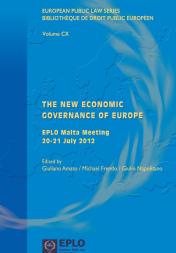
Administrative Law / Droit administratif
2008
Spain / Espagne
Doctor en Derecho, Profesor Asociado de Derecho Administrativo
en la Universidad de Castilla-La Mancha
The period under review in this chronicle has not been especially significant concerning the production of administrative acts. On the one hand, the general elections (on the 9th of March) have opened a period of impasse (pre- and post-electoral), which has slowed down the “legislative machinery”. On the other hand, the economic crisis, which has affected - and still does - our country, has resulted to the legislator focusing his regulatory power on resolving it. In this context, only three administrative laws can be mentioned: a) the Organic Law 1/2008, of July 30, that authorised the ratification by Spain of the Treaty of Lisbon, about which few or nothing we can say; b) the Royal Legislative Decree 1/2008, of January 11, that approved the revised text of the Environmental Impact Assessment of Projects Law, which was the subject of analysis in a previous issue of this Review; and c) the Royal Legislative Decree 2/2008, of June 20, that approved the revised text of the Land Law and on which our commentary will focus. A Royal Legislative Decree whose main purpose has been to clarify, to regulate and to harmonise the content and the terminology of two previous laws (Law 8/2007, of May 28, and Royal Legislative Decree 1/1992, of June 26). And it does so - or aspires to - with the strictest respect to the competencies of the (regional) legislator on matters of land use and urban development. Basically for this reason, given its character of revised text, the Royal Legislative Decree 2/2008, of June 20, cannot be considered as an innovative act. However, within his limits, the State legislator has tried: a) to imbue the regulations concerning land use and urban development with new social and environmental values; b) to fight against speculation and urban corruption, as far as possible; and c) to determine with the highest precision the two situations of land use (rural and urban) and to establish, above all, an evaluation land system based on the idea to fix the price of “...that it is...” and not on the expectations generated by the development of urban activity (with emphasis on the social function of property). In short, we are in front of a law directed to respond to the new problems and the changes that have been produced within the Spanish urbanism in these last years. Nevertheless, the final target to create a real “right to the city”, which converts cities in beautiful places to live in, has to wait for a better opportunity.
El período que comprende esta crónica no ha sido especialmente propicio en lo que la producción de normas administrativas se refiere. De una parte, porque la celebración de las Elecciones a Cortes Generales ha provocado un período de impasse (pre y post-electoral) que ha ralentizado, cuando no paralizado, la “maquinaria legislativa”. De otra parte, la crisis económica que ha afectado y está afectando a nuestro país ha hecho que el legislador centre sus esfuerzos normativos en dar solución a la misma. En este contexto, pues, no es de extrañar que tan sólo tres Leyes administrativas o con incidencia en el Derecho Público merezcan ser citadas. A saber: la Ley Orgánica 1/2008, de 30 de julio, por que se autoriza la ratificación por España del Tratado de Lisboa y sobre la que sustantivamente poco o nada cabe decir; y dos Reales Decretos Legislativos. El 1/2008, de 11 de enero, por el que se aprueba el Texto Refundido de la Ley de Evaluación de Impacto Ambiental de Proyectos, y que ya fue objeto de análisis en un número anterior de esta Revista; y el 2/2008, de 20 de junio, por el que se aprueba el también Texto Refundido de la Ley del Suelo, en el que se ha centrado nuestro comentario. Un Texto Refundido cuya finalidad principal ha sido la de aclarar, regularizar y armonizar tanto la terminología como el contenido dispositivo de otros dos textos legales: la Ley 8/2007, de 28 de mayo y del RDLeg. 1/1992, de 26 de junio. Y lo hace - o al menos lo pretende -, desde el más estricto respeto a las competencias del legislador (autonómico) en la materia de ordenación del territorio, urbanismo y vivienda. Lo que va a provocar, junto a su carácter de Texto Refundido, que el RDLeg. 2/2008, de 20 de junio, no pueda considerarse una norma innovadora. Con todo, y siempre dentro del estrecho margen permitido por estas dos señaladas circunstancias, el Legislador-Gobierno ha intentado a su través: a) imbuir la normativa estatal con incidencia en la ordenación del territorio y el urbanismo de nuevos valores y tintes sociales, y ambientales; b) frenar la especulación y, en la medida de lo posible, luchar contra la corrupción urbanística; y c) sobre todo, determinar con mayor precisión las situaciones en las que puede encontrarse el suelo (que ahora pasan a ser dos: rural y urbanizado), así como establecer un régimen de valoraciones basado en la idea de tasar “…lo que hay…” y no las meras expectativas generadas por el eventual desarrollo de la actividad urbanística, poniendo el acento en la función social de la propiedad. Estamos, en definitiva, ante una norma que trata de hacer frente a los nuevos problemas y a los cambios que se han producido en el urbanismo español en los últimos años. Aunque, quizá, el reto último de configurar un verdadero “derecho a la ciudad”, esto es, conseguir que las ciudades se conviertan en lugares gratos y hermosos para vivir, deberá aguardar mejor ocasión.





















